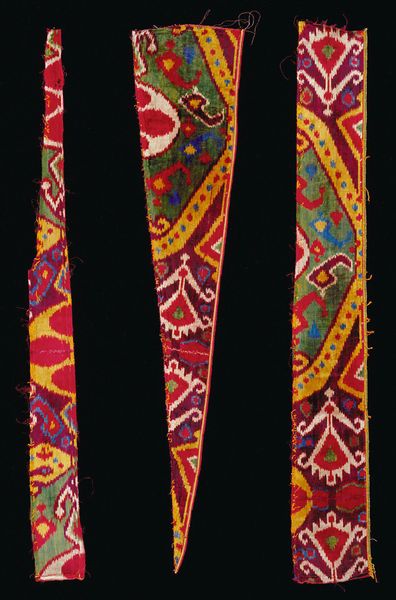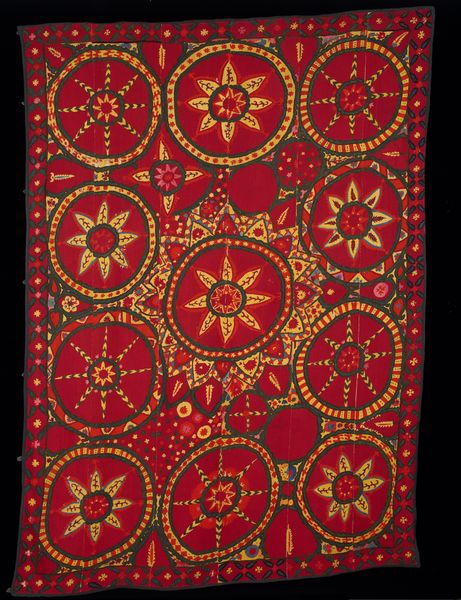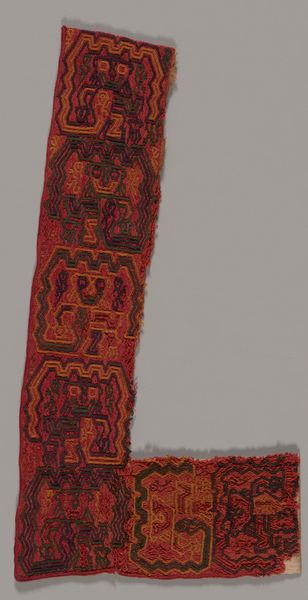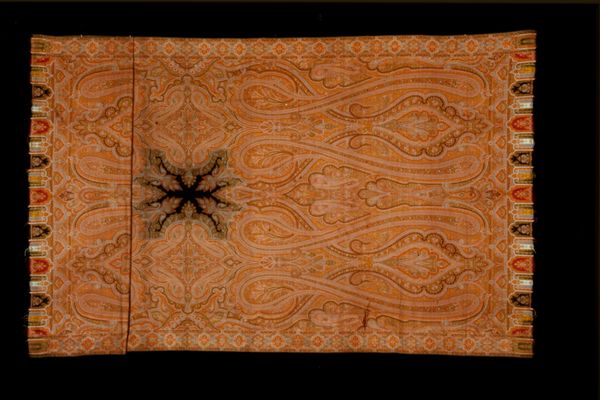
weaving, textile, cotton
#
asian-art
#
weaving
#
textile
#
geometric pattern
#
folk-art
#
geometric
#
pattern repetition
#
cotton
#
decorative-art
Dimensions: 73 1/2 x 9 3/4 in. (186.69 x 24.77 cm) (without ties)
Copyright: Public Domain
Curator: Let's consider this captivating object; a "Border for Head Covering" crafted around the mid-20th century, a woven cotton textile from the Kanbi people. Editor: It shimmers! The small embedded mirrors catch the light in a way that really activates the piece. It’s intensely decorative, and somehow quite joyful, even though it looks intensely laborious. Curator: The meticulous handwork is indeed significant. Think about the repetitive motions, the slow accumulation of pattern. This speaks to a community investment in the production and use of these head coverings, beyond mere functionality. What narratives are woven into this cloth, revealing gender roles and artistic expression? Editor: Precisely. Visually, I'm struck by the concentric circles, stars and the recurring cross motif, perhaps representative of cosmos or directional symbols; this might signal important social relationships, geographical orientation or a belief system. Curator: The cotton itself, consider where that material came from. Was it locally grown or acquired through trade? This weaving embodies the cultural interactions and economic realities of its time. The production process itself signifies so much. Editor: The colors themselves! Crimson, ochre, navy. Colors tell stories! These are emotionally resonant colors— what are they trying to express? What’s also fascinating is how abstract these shapes appear while remaining grounded in a symbolic function. Curator: The combination is crucial to understanding this "Border for Head Covering"; this art form challenges traditional notions of hierarchy because, here, functional craft expresses high-level creative intent. Editor: I agree, looking at this "Border for Head Covering," I keep wondering what the full head covering would have looked like and under what social circumstances it would have been worn. It’s a beautiful artifact hinting at hidden meanings. Curator: For me, looking at the artwork as a whole I’m now struck again with an even deeper appreciation of the textile worker and the significance of craft to that artist and its community. Editor: And for me, this intricate weaving, so meticulously made, is no longer an isolated textile, but a portal connecting us to generations past and the rich visual culture of the Kanbi people.
Comments
No comments
Be the first to comment and join the conversation on the ultimate creative platform.













